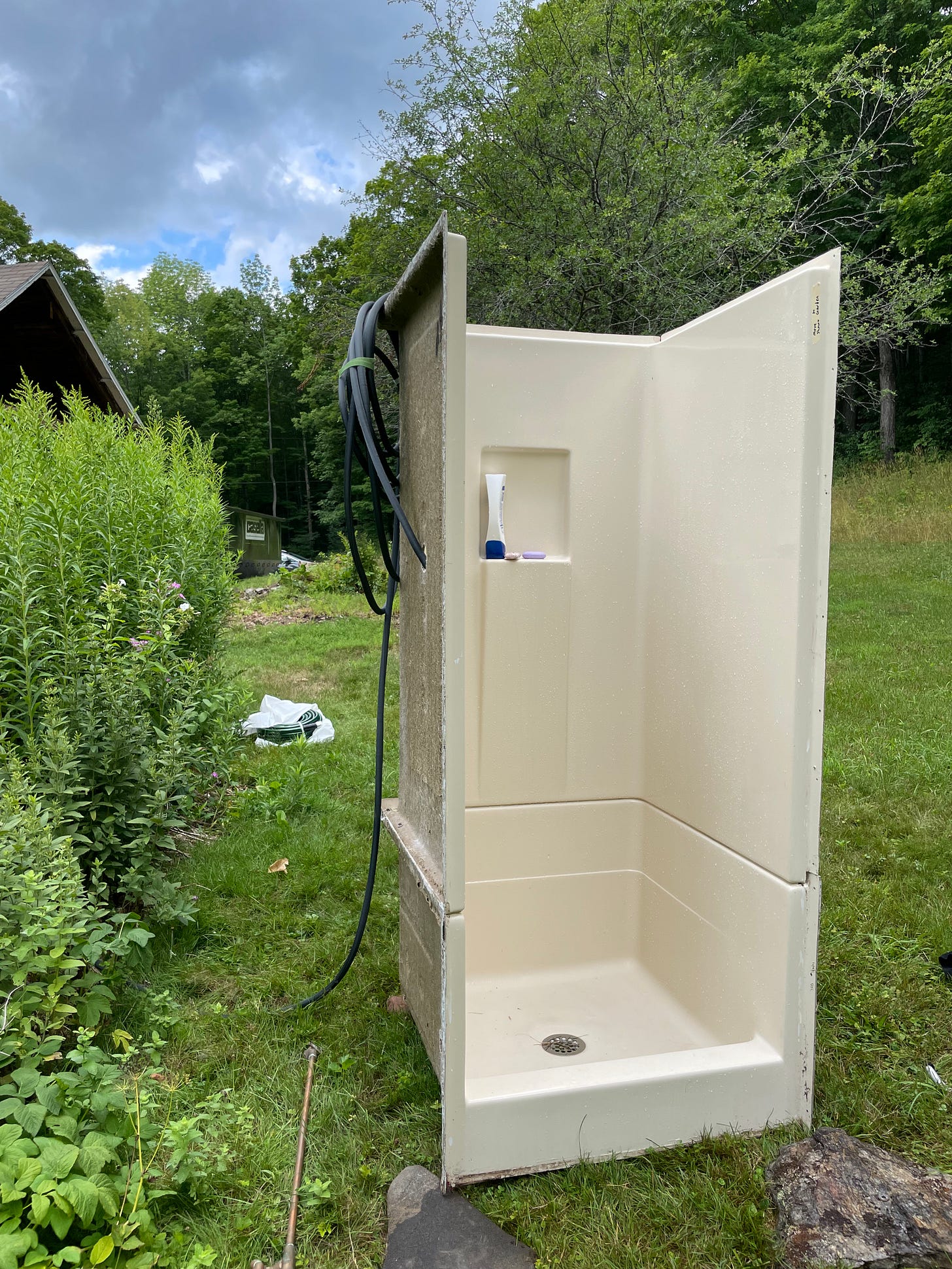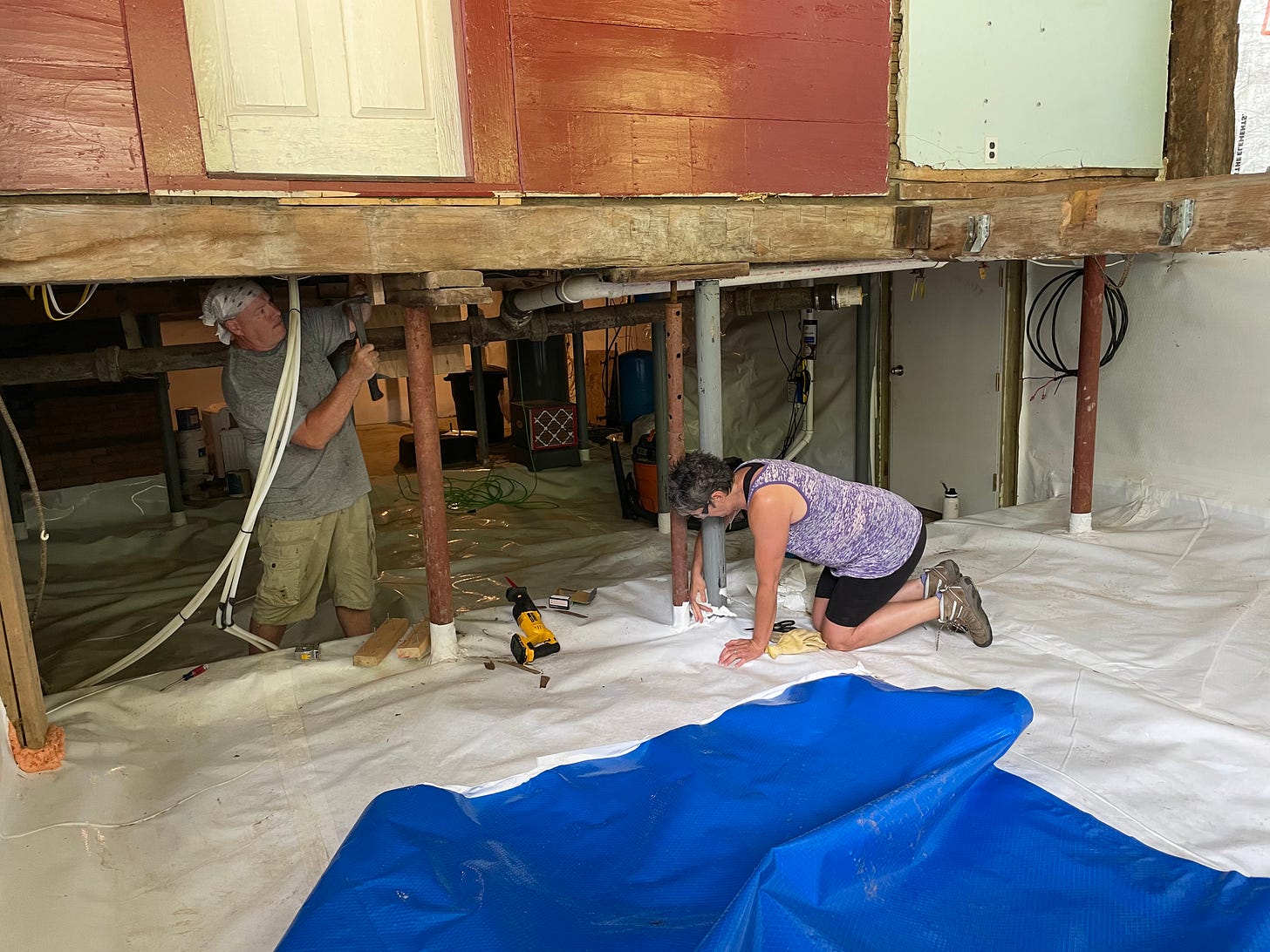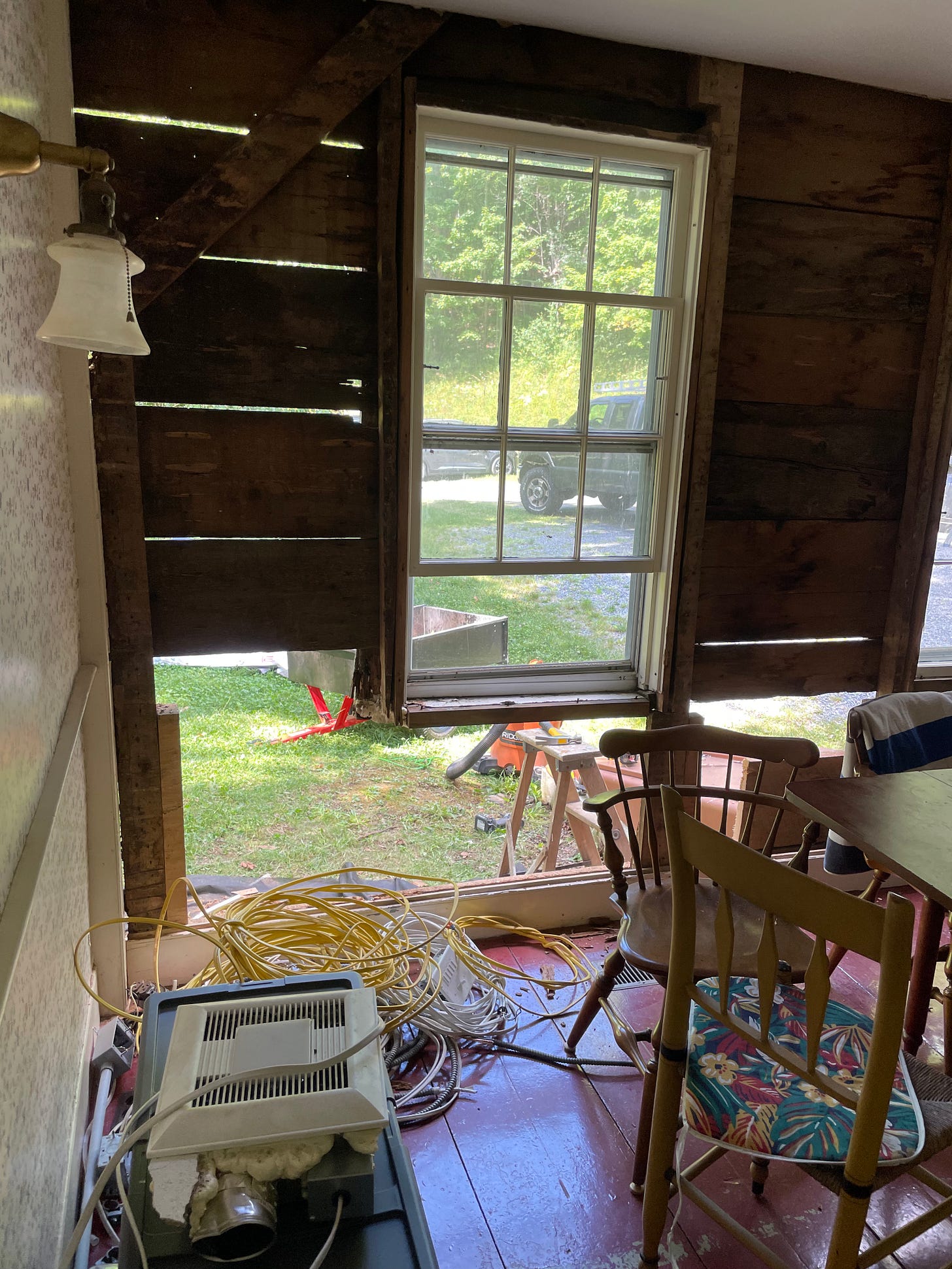It’s On!
I flipped the solar array breaker, turning on the flow of electrons to our net zero future, and the page on the next chapter for the house. It was a great feeling!
“Net Zero” in this case means operational net zero; no carbon pollution required to run the house1 The array2 was sized to generate, over a calendar year, as much electricity as we expect the future house to require to operate over that same period. Since all systems in the house will be powered by electricity (heating/cooling, hot water, cooking, etc.), and the electricity is generated without fossil fuels, that is how we will get to net zero.
Net zero was enabled by two other features of the setup (beyond electrifying all our systems, and other things I discussed in a prior blog): (1) our array connects to the grid. So when the sun goes down, Green Mountain Power (GMP) will send electrons our way and keep the lights on, and the water flowing, and the heat on… and (2) we have a net metering arrangement. Net metering means we get credits from GMP for the power generated in excess of what we use (during the day, especially in the months with longer days), which can be applied to the bill in the times when the array is not making as much as we use (at night, and during the less sunny winter months). Over the course of a calendar year, these will balance out if we did our estimating correctly.
We actually didn’t need to site the array on our property to get to net zero via solar power. Through community solar, the option now exists to get access to the benefits of solar without putting up solar arrays on your property. Some plans allow one to purchase a portion of an array located elsewhere (typically an array tied into the grid of your electricity provider). This option affords the full benefits of ownership (tax credits, net metering, etc.). It also requires an upfront investment to get access. Other community solar plans allow consumers to get discounted electricity (typically 10% off your going rate) without needing to invest any upfront capital. Solar developers can do this because having committed customers has value to them. It is a win-win. This article provides a great explanation of the different kinds of community solar plans, as well as links to sites that provide options in different regions of the country.
We considered community solar when we learned our rooftop was not suitable due to shading. But we have a great spot for a ground mounted array just across the road. It gets good sun throughout the day, is not a significant wildlife habitat/traffic area, and we (okay, our neighbor Jason) could shape the hill to tuck it out of sight from the house. Plus, we looked forward to the future conversations it would spark about solar. Interested neighbors and curious strangers have already stopped by, much to my delight. Any opportunity to talk solar power and net zero living is a good one!
Beyond solar
Truth be told, the solar array isn’t the only reason people stop and look/ask questions. The work to dismantle the “L” off the back of the house, which comprised a breezeway, woodshed, bathroom (which had the only shower) and mudroom, is well underway–as is clapboard removal. I will discuss the overall layout for the new structure in an upcoming blog.
The Snowdog team has been hard at work in this deconstruction phase, as has yours truly, with the welcome help of friends who have stopped by to lend a hand!


Care is being taken as to deconstruct this portion to allow reuse of much of the material (lowering the embodied carbon of the build, reducing waste, AND giving us some lovely pieces of wood and items to work into the renovated and newly constructed structure).
As the layers come off, the historic timber frame has been revealed.
So have places that are going to require a little extra love and attention.

And we even found a few old treasures, including evidence that the prior owners liked beer too.
Away we go! And, with that beer in mind, cheers to the prior owners, one and all, for all they did to get us to this point!
In Digging In, I discussed the other aspect of emissions to consider–embodied carbon, which is the carbon pollution generated to make the house–the primary driver of which is the materials chosen to build it, and our work to minimize embodied carbon in the build.
Special shoutout to Suncommon, who installed the solar PV system. They are a certified B-corp (so we knew they cared about doing right by their employees, the environment, and the local community). Our sales experience (with Zack) was transparent and responsive—and competitively bid, their staff on site did a great job, worked very hard, and were willing to answer questions. And the project manager, Molly, was a rock star in helping us understand the workflows, timing, addressing issues and questions, and managing the process through the various approvals and coordination that needed to happen, while minimizing demand on us. 5 stars!







Showering under the stars, you might start a new trend.
The blog is outstanding the history with this house is awesome, I wonder who brought the beer can from Albany?
Congratulations on flipping the switch to solar and informing us on other ways to possibly get the switch to solar.
Looking forward to the next blog, and photos of the progress as the old house comes into the future, but using the original beams in the new construction will be beautiful.
Brian, your newsletter is awesome! I’m loving the hyperlinks to prior newsletters. I love following your progress on your home; I’m learning a lot. Keep the faith brother.